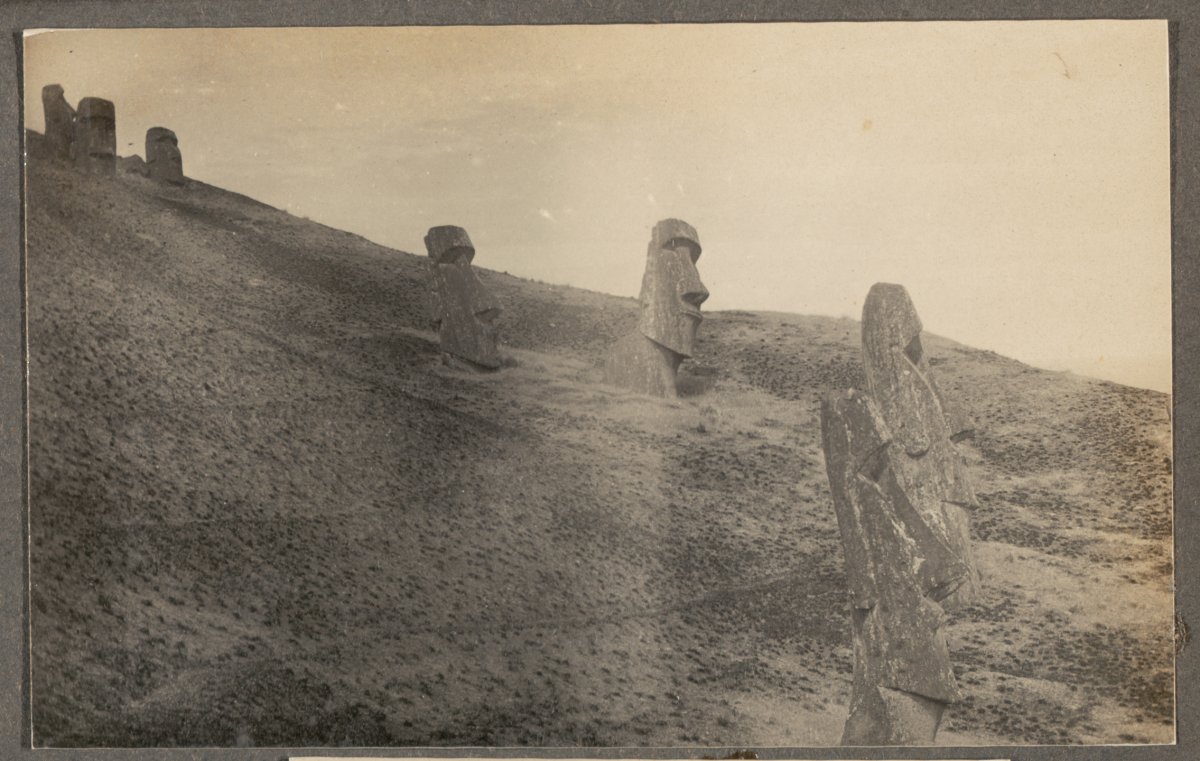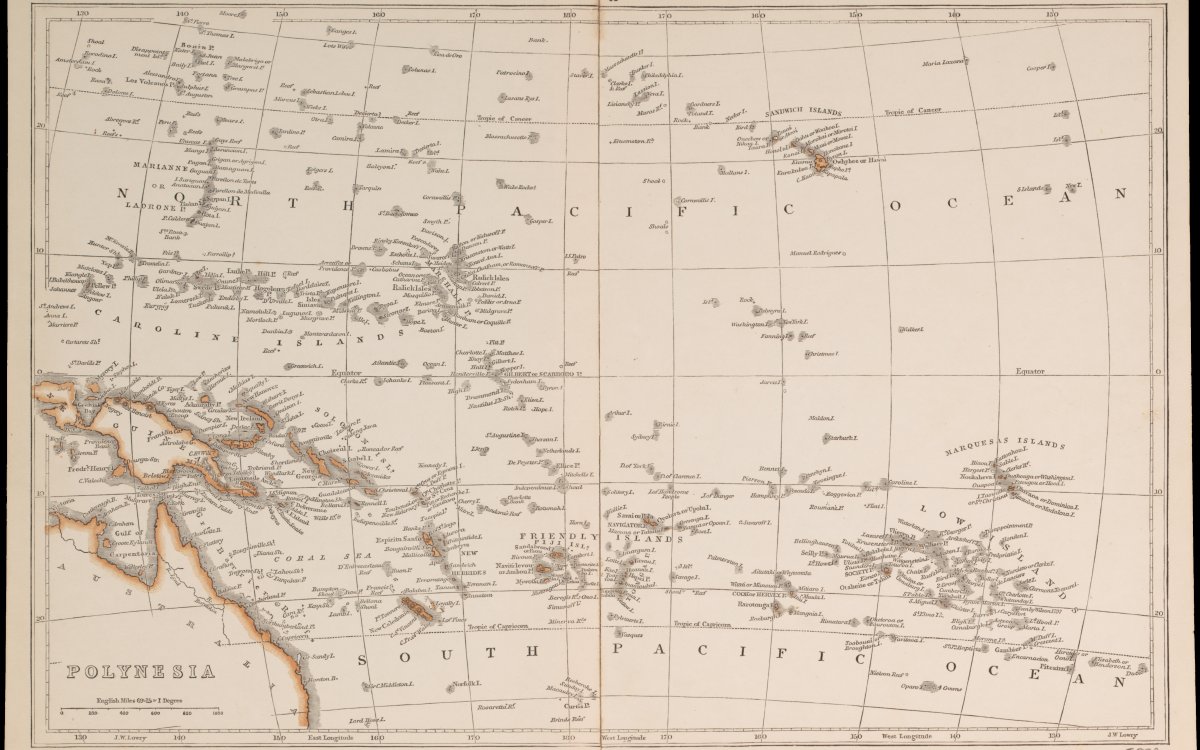
Lowry, Joseph Wilson, 1803-1879. Lowry's table atlas & Chapman and Hall. (1852). Polynesia [cartographic material] / J.W. Lowry. https://nla.gov.au/nla.obj-232614125
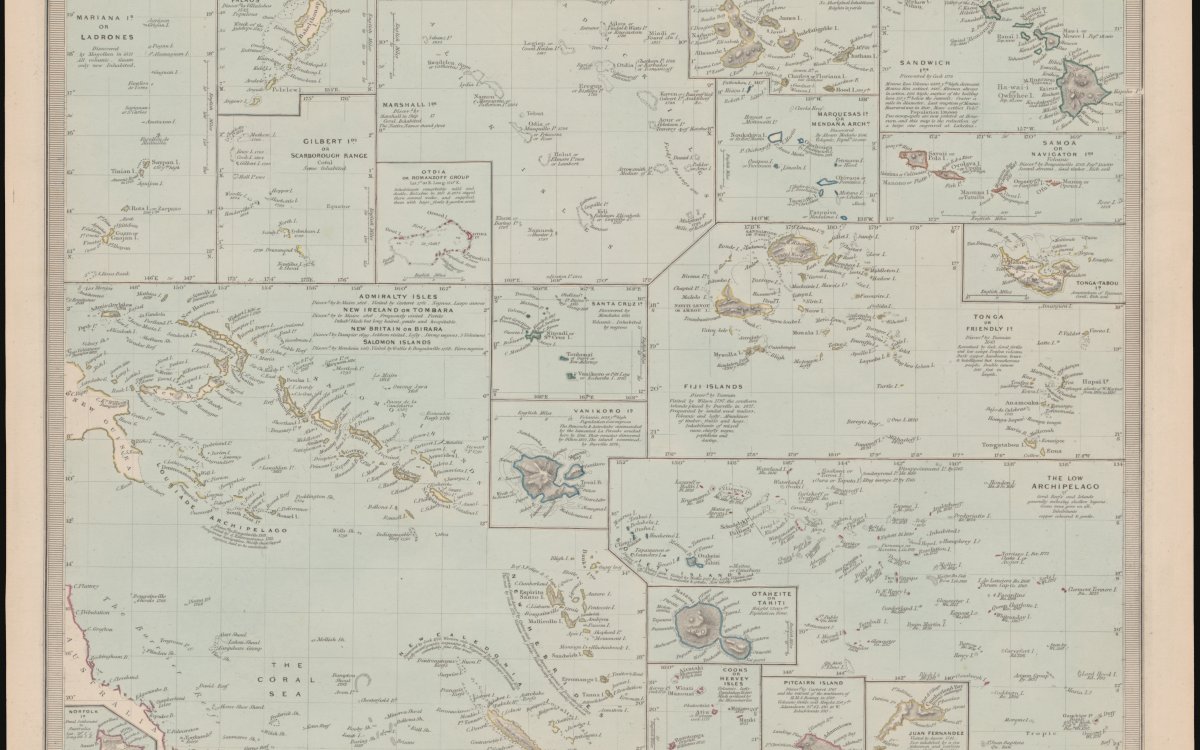
J. & C. Walker & Society for the Diffusion of Useful Knowledge (Great Britain) & George Cox. (1853). Polynesia, or, Islands in the Pacific Ocean [cartographic material] / engraved by J. & C.Walker. https://nla.gov.au/nla.obj-232638999
Polynesian environments
Looking at Polynesia on a world map can be deceiving, as the vast majority of the Polynesian islands appear as near-identical green specks scattered across vast oceanic areas. Despite this, a closer look reveals that there is a wide variety of islands, of different sizes and shapes, and with several factors that influence the nature, distribution and abundance of natural resources available across the Pacific. The age of an island, its surrounding seascape (be it a reef or lagoon) and the geological process that resulted in the island’s formation will influence the environmental conditions.
As a result, the first Polynesian seafarers encountered a range of different environments, depending on where they were landing. While larger islands like Aotearoa (New Zealand) harboured abundant terrestrial resources (such as fresh water and moa birds) compared to small atolls, its climate is temperate, which greatly limited the range of Polynesian crops that could be cultivated. With the exception of Aotearoa, Polynesian islands were generally not rich in edible terrestrial species, with fruit bats being the largest endemic mammals. Birds were the most abundant terrestrial resources, as few edible plants were endemic. Marine resources (fish and shellfish), accessible from lagoons or nearby reefs, were often the main source of protein, as evidenced by the presence of fishhooks and the large amount of fish and shellfish remains in the archaeological record. Early small villages were usually strategically located on or near the coast, often in proximity to fresh water sources and reef and lagoon resources. Virgin habitats provided abundant marine resources to the pioneering groups, as these pristine environments had until then remained unspoilt.
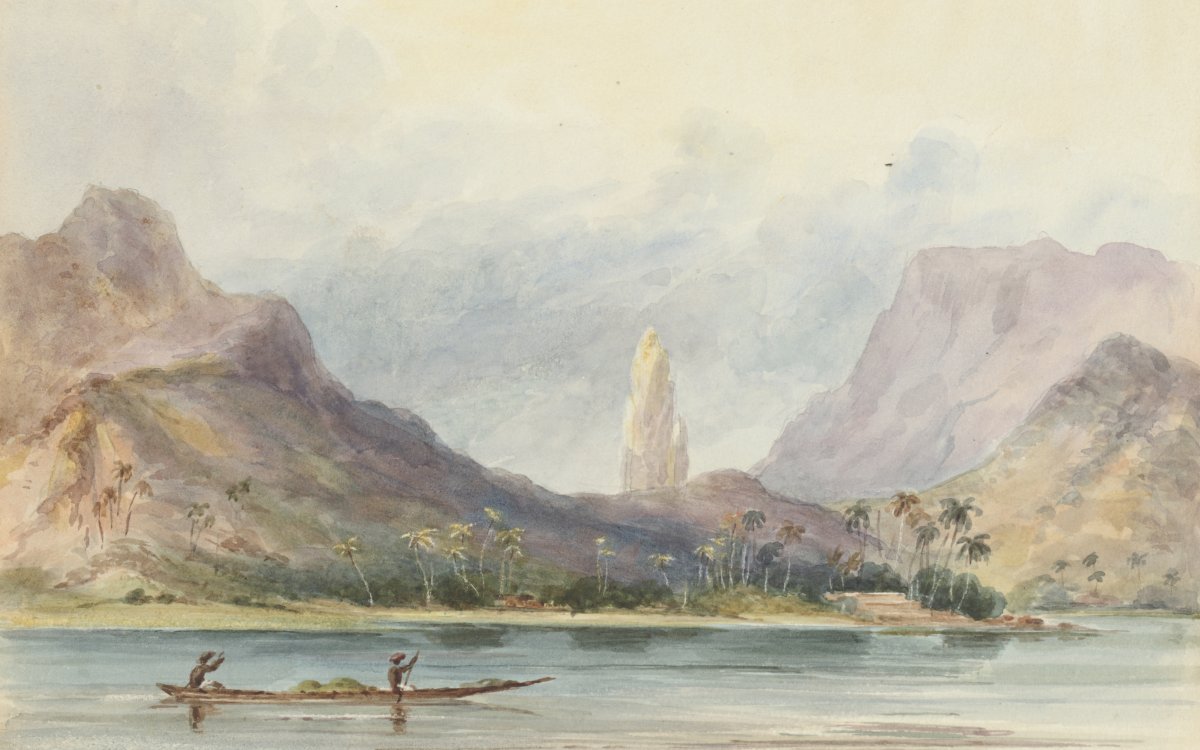
Chevalier, Nicholas, 1828-1902. (1868). Otaheite [i.e. Tahiti] [picture] / [Nicholas Chevalier]. http://nla.gov.au/nla.obj-134623111
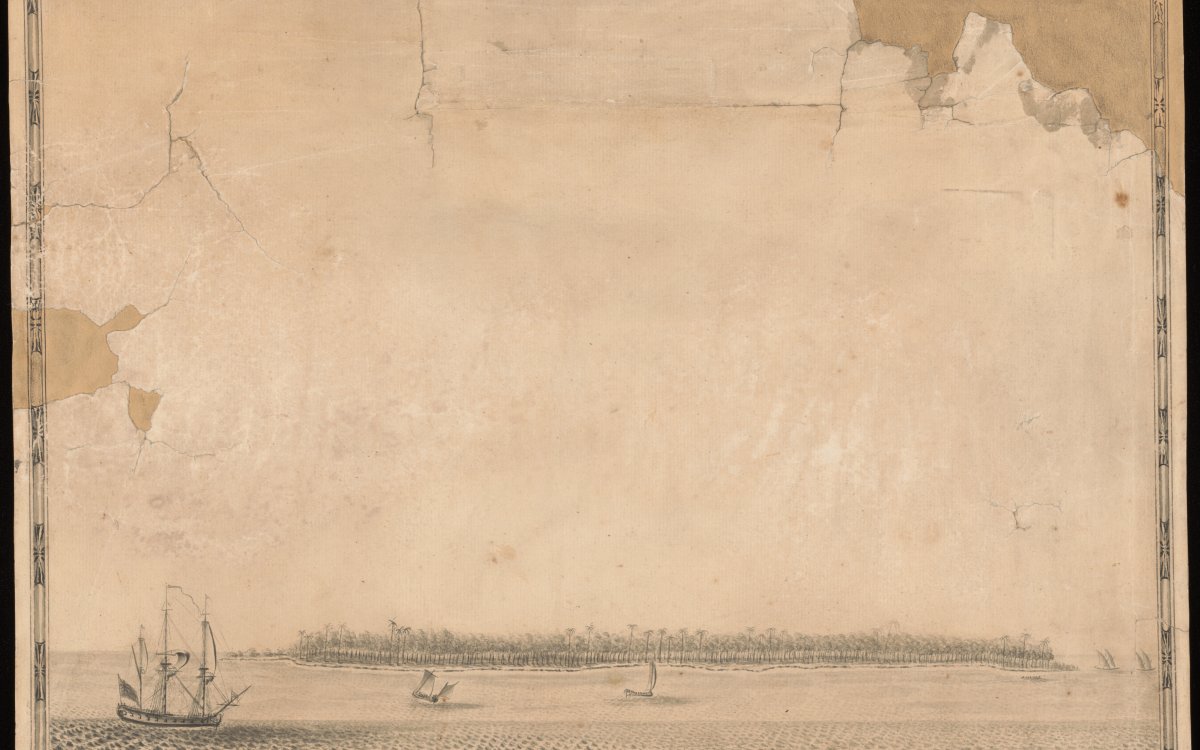
Wallis, Samuel, 1728-1795. (1767). Pacific atoll with Dolphin in the foreground [picture] / [Samuel Wallis]. http://nla.gov.au/nla.obj-134726725
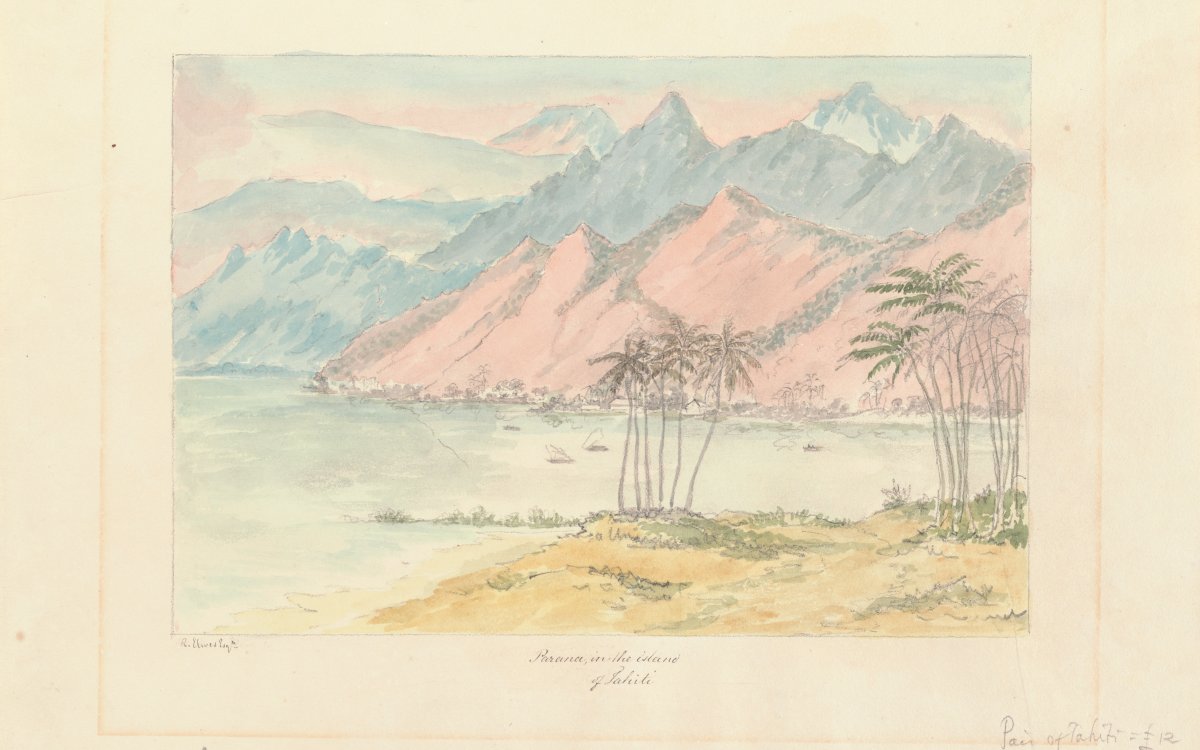
Smith, Charles Hamilton & Elwes, Robert. Sketcher's tour round the world. Parana in the island of Tahiti [picture] / [Charles Hamilton Smith]. http://nla.gov.au/nla.obj-136489091
Cultural developments to manage the landscape
Strategies were put in place to complement the natural resources available and ensure the viability of newly established settlements on previously uninhabited islands. Over time, other cultural developments occurred to ensure sustainable and sufficient food production for the growing populations of these flourishing settlements.
Expeditions aimed at settling new territories were conducted using canoes carrying resources for the explorers. Remains of animal species previously absent from these islands (such as pigs, chickens, dogs and rats) are found in early deposits at founding archaeological sites across Polynesia. Evidence for the importation of plant resources, such as taro, sweet potato and breadfruit, is also widely documented from initial occupations. These ‘transported landscapes’ were gradually established through new arrivals and exchanges, and helped to create sustainable environments where groups could thrive. Almost immediately after arrival in previously uninhabited territories, settlers made conscious efforts to combine agriculture and domesticated animals to establish a sustainable horticultural system of food production, taking advantage of the often fertile volcanic soils.
Adaptation was key, and a range of strategies were developed to make the most of the available environments. Valley bottoms and steep hillsides were often modified by terracing and canalisation of streams, resulting in networks of irrigated terraces and pondfields for taro cultivation. In other drier areas, including certain regions of Hawaii or Aotearoa, field systems were arranged for the cultivation of crops such as sweet potato or breadfruit. Sweet potato, a resource that became essential in several areas, was likely transferred from South America. On constraining atolls, Polynesians dug large pits in the coral grounds to reach the freshwater table and cultivate taros and bananas. On Aotearoa and Rapa Nui (Easter Island), large areas were transformed into rock mulch gardens, where broken rock was mixed into the soil to increase the levels of nutrients required for taro and sweet potato cultivation.
When conditions were adequate, the population density increased over time and evidence is documented of the gradual intensification of food production systems across Polynesia over the past millennium. With time, the means of intensified food production gradually became entangled in political and religious activities and likely contributed to the development of social hierarchies and conflicts in several regions of the Pacific such as Aotearoa, Society Islands and Hawaii. On Mangaia in the Cook Islands, for example, taro was heavily involved in the network of ideological relationships between the paramount chief and the god Rongo. In Hawaii, large temples (heiau) made of stones were constructed for activities related to the ritual supervision of cultivation and the collection of tributes.
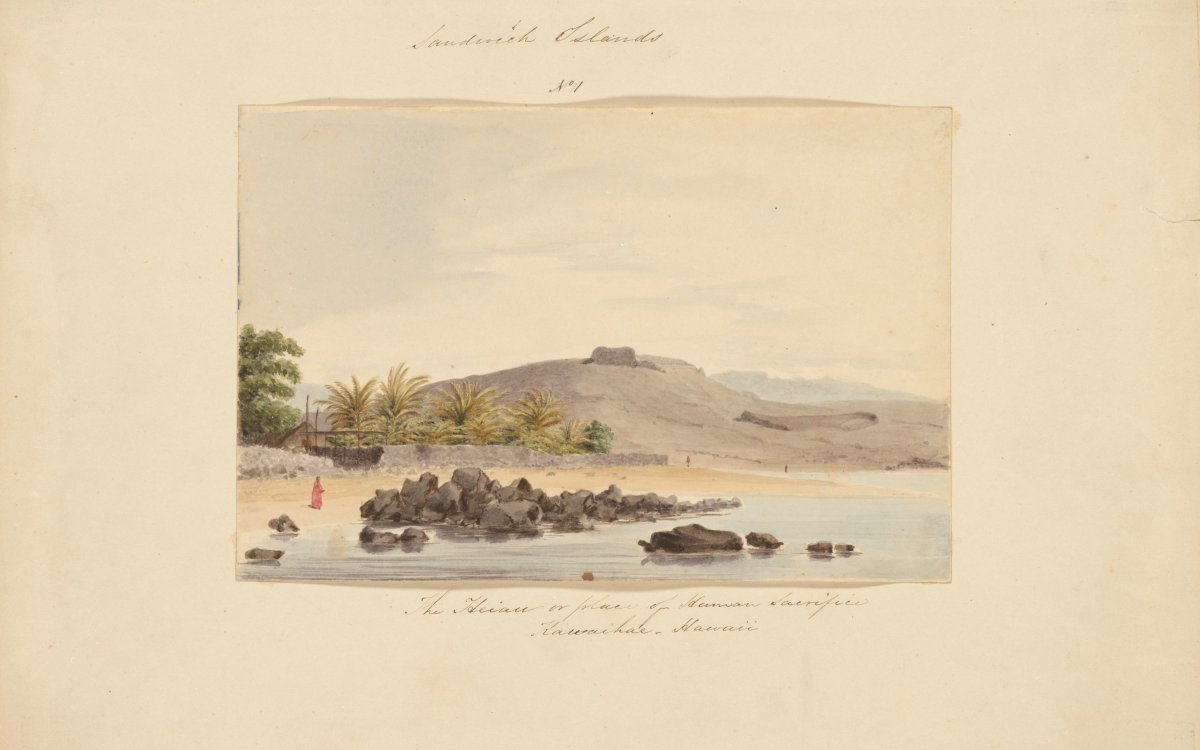
Sawkins, James Gay, 1806-1878. (1855). The heiau or place of human sacrifice, Kawaihae, Hawaii [picture] / [James Gay Sawkins]. http://nla.gov.au/nla.obj-134661044
Consequences
These developments had visible consequences on the relatively fragile insular environments. Predation by humans resulted in the disappearance or the significant reduction of populations of endemic and indigenous species. A decline in birds, sea mammals, fish and shellfish populations following the arrival of human populations is evident across Polynesia. On Aotearoa, the temperate climate greatly limited the cultivation of most Polynesian crops (with the exception of sweet potato) so hunting and exploiting the rich marine resources was a significant contribution to the settlers’ diet. Several species of flightless birds, collectively known as moa, were intensively hunted, as evidenced by numerous butchery mounds containing large quantities of moa bones and eggshells. The magnitude of the exploitation of this unique resource is particularly evident at the site of Wairau Bar (one of the earliest inhabited sites in Aotearoa and possibly a founding settlement), where the remains of about 12,000 birds were excavated. Direct and indirect human impacts such as hunting, fires and the introduction of exotic species eventually led to the extinction of the moa within a few centuries.
![A sepia toned photograph mounted in a photo album. The photograph shoes a museum installation. The exhibition is of three giant bird skeletons, Moa. Two smaller specimins flank a central giant specimen. The central skeleton is almost double the height of the smaller ones, almost reaching the roof. The skeletons are surrounded by other exhibitions including (presumably) Moa eggs, a diorama with the lable "Volcanic System of Ruaphehu & Tong[a]", and sacks used by sailors. There are maps on the wall.](/sites/default/files/styles/content_full_width/public/media/images/2021-12/nla.obj-140661464.jpg?h=dca54ccd&itok=f2-Hw0yF)
Richards and Co. (Sydney, N.S.W.). (1880). Group of Moa skeletons in the New Zealand Court In the gallery above the main portion of the New Zealand court are shown three skeletons of the Moa, an enormous bird, which inhabited New Zealand up to the end of the seventeenth or eighteenth century, ranging from the size of a goose to twelve or fourteen feet in height. Almost perfect skeletons of the bird are found from time to time in different parts of the colony [picture] / edited by John Plummer ; Richards & Co. http://nla.gov.au/nla.obj-140661464
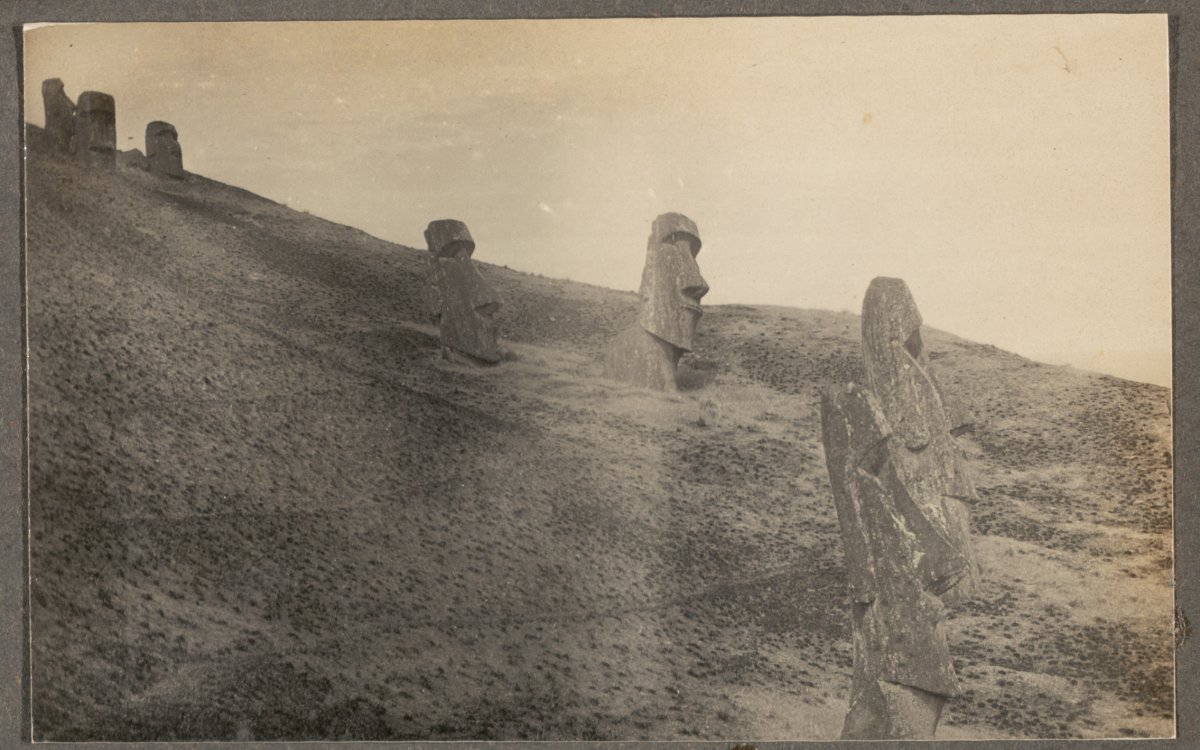
Searle, E. W. (Edward William) 1887-1955. (1911). Statues alongside the hill, Easter Island [picture]. http://nla.gov.au/nla.obj-142166020
Repeated forest clearance and burning for swidden agriculture has resulted in savanna-like grasslands over large areas onseveral islands (including Rapa Nui, Mangareva, Mangaia, Futuna, Aotearoa). Clearing of vegetation for gardening also exposed sloping land to erosion, which resulted in landscape degradation and increased sedimentation in downhill areas. On Rapa Nui, the palaeoenvironmental record reveals that the island once harboured a palm forest, which contrasts with the contemporary treeless landscape. Contrary to popular belief, the cause and timing of deforestation remains the subject of debate, and no studies have provided sufficient evidence for a cultural and ecological collapse on Rapa Nui prior to European contact. Data do not corroborate the story of a societal collapse triggered by environmental degradation. It is more likely that a range of factors contributed to the disappearance of Rapa Nui palm trees, including human activities, the impact of introduced rats and climatic conditions such as droughts and El Niño.
Activities
- The image of Pacific islands as tropical islands with lush jungles, mountainous peaks and pristine beaches is pervasive in film and literature. However this is not reflective of actuality. The Polynesian triangle stretches from Rapa Nui in the east, Hawaii in the north and Aotearoa in the South West. Each of these places having a variety of landscapes and ecological features, sometimes within their own borders.
- Have students compare and contrast the environment from two islands/nations/ areas from different areas of the Polynesian Triangle. Why are the environments different/similar? How are they different? How might life be different for the inhabitants in each area? What would the differences mean for crops, farming, or hunting? What environmental hazards do people have to adapt to in each place eg. volcanoes, cyclones, etc?
- Have students compare and contrast the environment from two islands/nations/ areas from different areas of the Polynesian Triangle. Why are the environments different/similar? How are they different? How might life be different for the inhabitants in each area? What would the differences mean for crops, farming, or hunting? What environmental hazards do people have to adapt to in each place eg. volcanoes, cyclones, etc?
- The transition from palm forest to grasslands on Rapa Nui has often been used to demonstrate how ecological collapse can lead to the collapse of an organised society despite speculation remaining about what happened on Rapa Nui prior to European contact. Nevertheless, civilizations and communities rely on the land around them for survival.
- How might a shift in the surrounding environment impact an established society? Consider changes like rising sea levels, decrease or increase of rainfall or temperature, coral bleaching etc. Students could also consider man-made changes to the environment such as old growth forest clearing, introduction of pests or disease. The theory of environment impact on a civilization is also discussed in “The Decline of the Khmer Empire”. This could be referred to for examples of theories of decline as a result of environmental changes elsewhere.
- How might a shift in the surrounding environment impact an established society? Consider changes like rising sea levels, decrease or increase of rainfall or temperature, coral bleaching etc. Students could also consider man-made changes to the environment such as old growth forest clearing, introduction of pests or disease. The theory of environment impact on a civilization is also discussed in “The Decline of the Khmer Empire”. This could be referred to for examples of theories of decline as a result of environmental changes elsewhere.
- The islands of Polynesia are considered as one of the world’s biodiversity hot spots with many species of flora and fauna found nowhere else, thanks to the remote nature of many of Polynesia’s islands.
- Have students research a species unique to the Polynesian region (extinct or extant) and create a species profile. This could include a mapping exercise showing the extent of its habitat, migration patterns, food chain, conservation status (if extinct, theories of its decline), breeding habits, etc
|
Image
 |
Dr. Mathieu Leclerc is Lecturer in Archaeology at the School of Archaeology & Anthropology at the Australian National University. He has written several academic publications on archaeology in Oceania and was the lead editor of "Archaeologies of Island Melanesia". In parallel to archaeology he is working on the development of non-traditional research outputs to help bridge the gap between academia and the general public. |
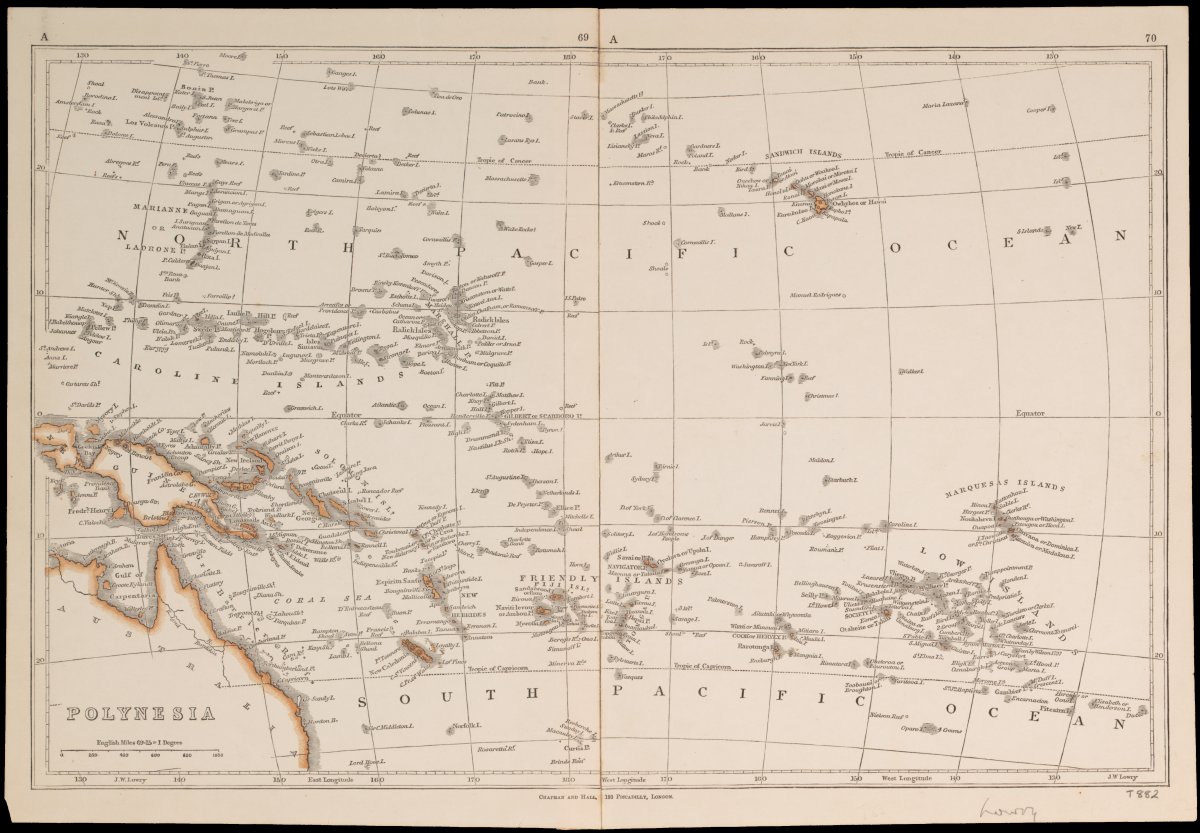
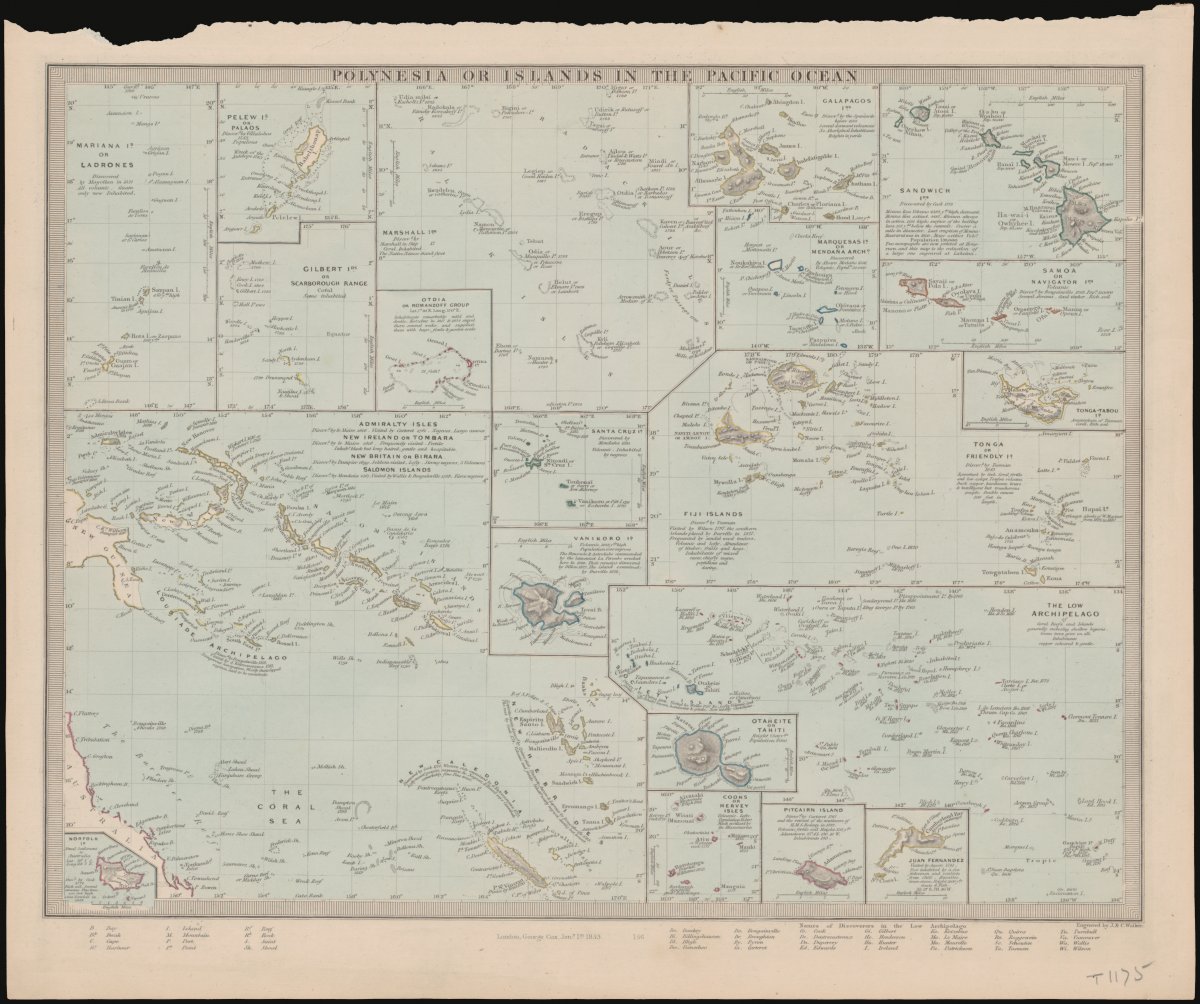
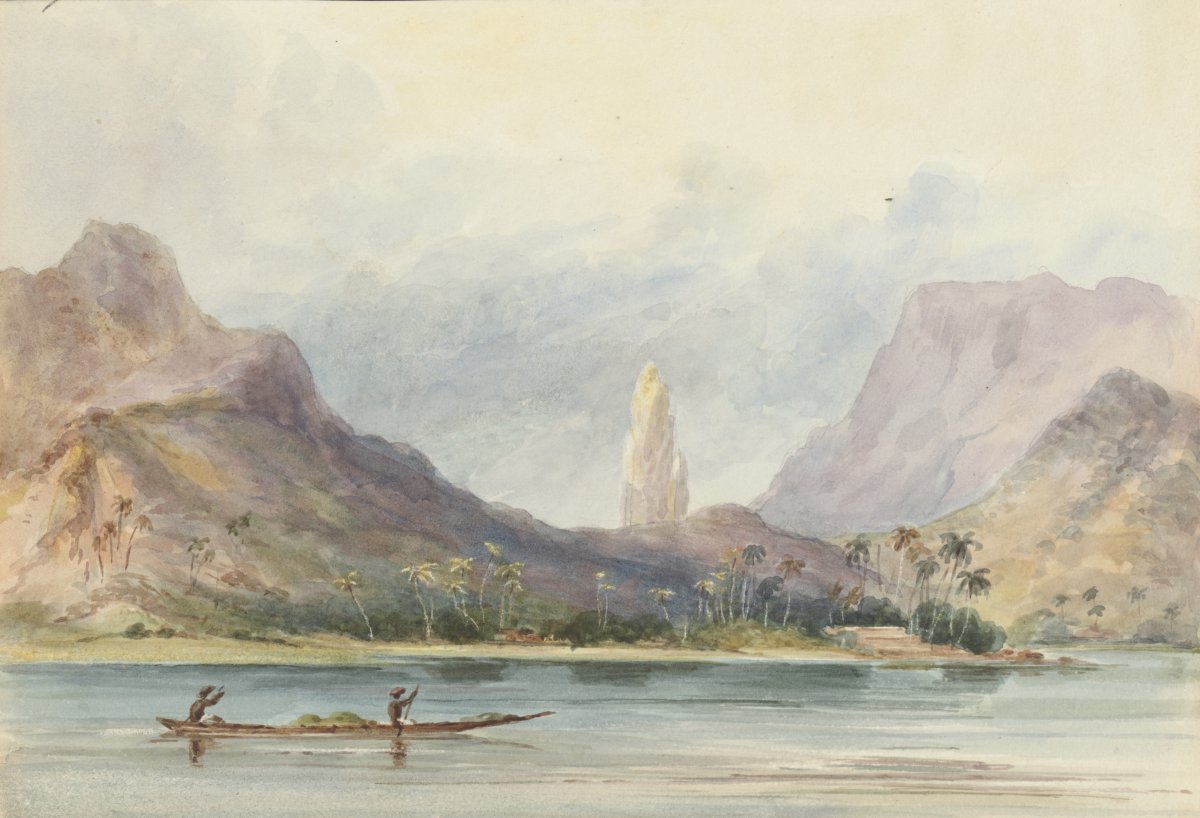
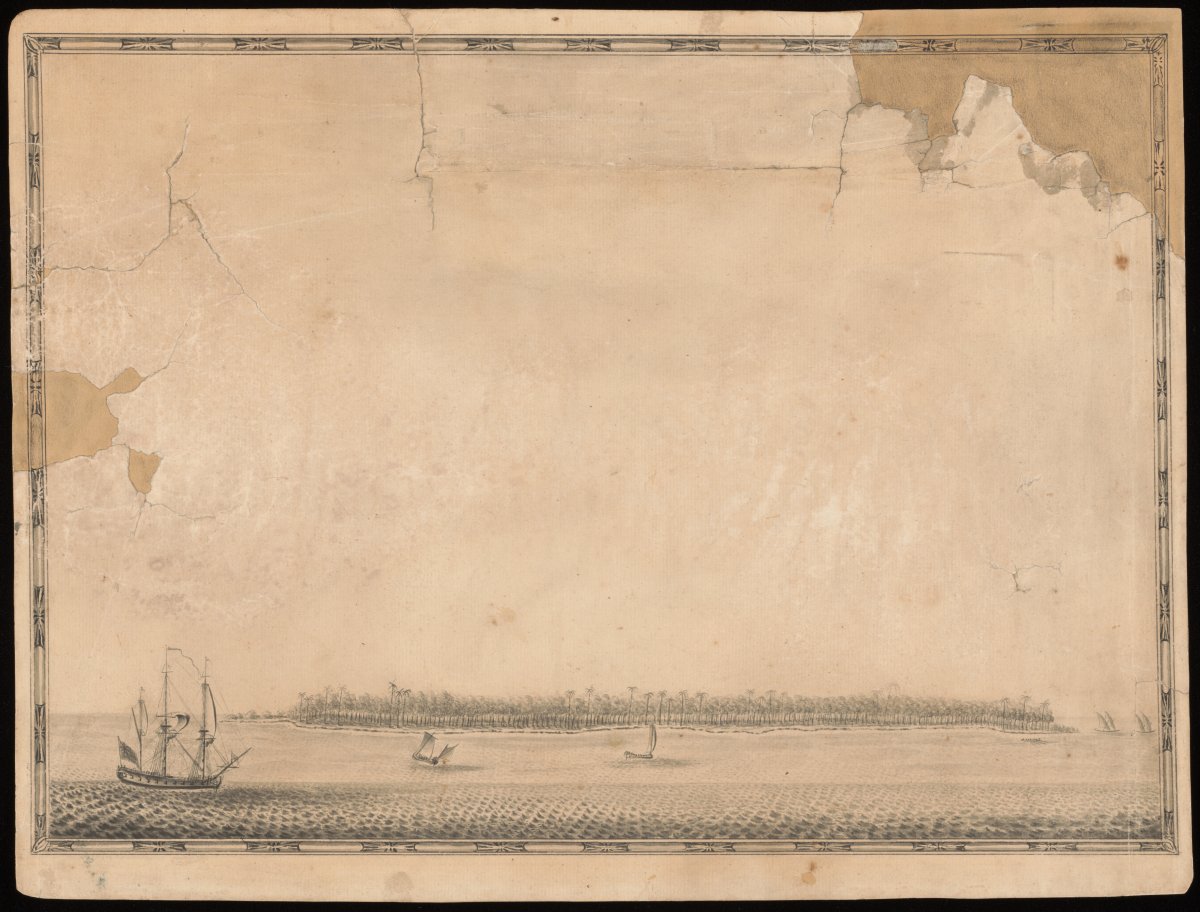
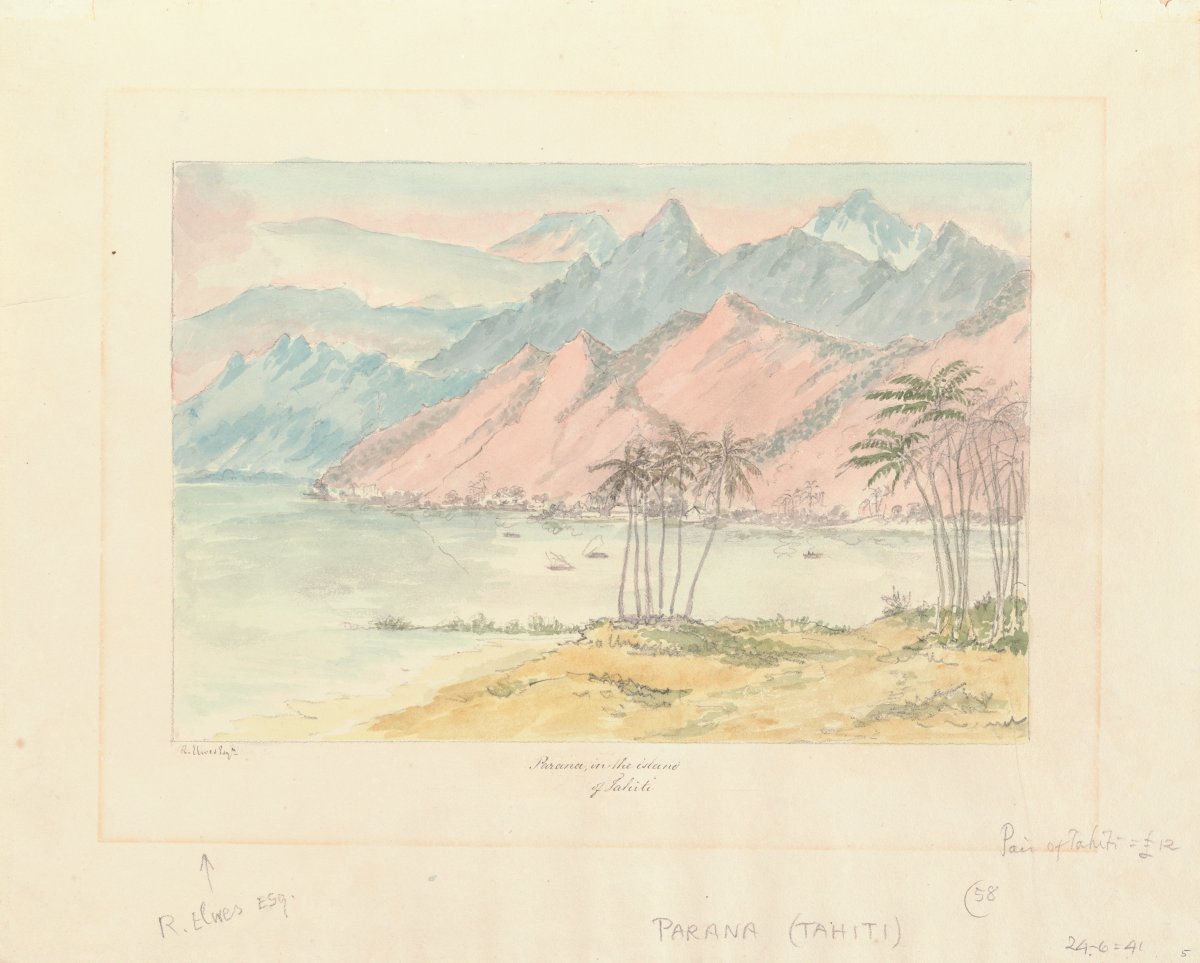
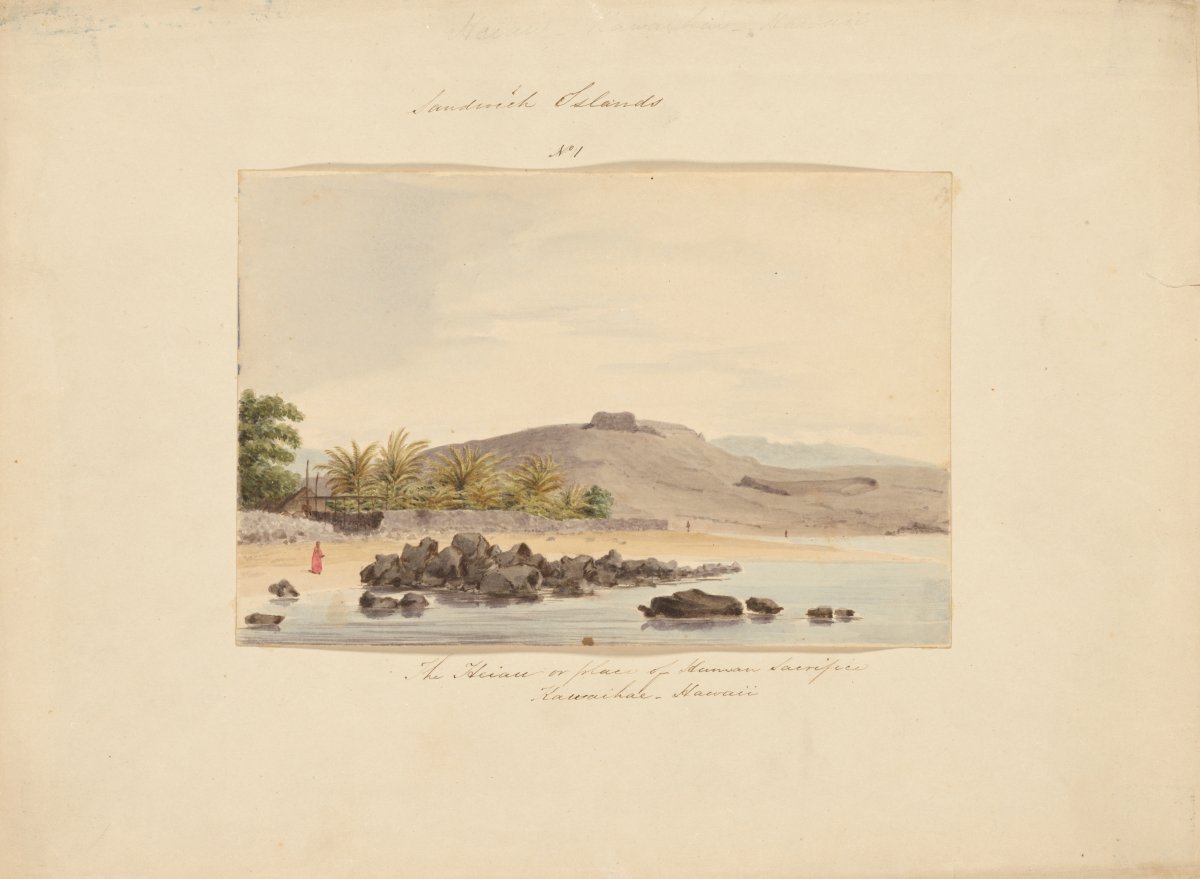
![A sepia toned photograph mounted in a photo album. The photograph shoes a museum installation. The exhibition is of three giant bird skeletons, Moa. Two smaller specimins flank a central giant specimen. The central skeleton is almost double the height of the smaller ones, almost reaching the roof. The skeletons are surrounded by other exhibitions including (presumably) Moa eggs, a diorama with the lable "Volcanic System of Ruaphehu & Tong[a]", and sacks used by sailors. There are maps on the wall.](/sites/default/files/styles/full_content_width_no_cropping/public/media/images/2021-12/nla.obj-140661464.jpg?itok=Vj_XUqJE)
